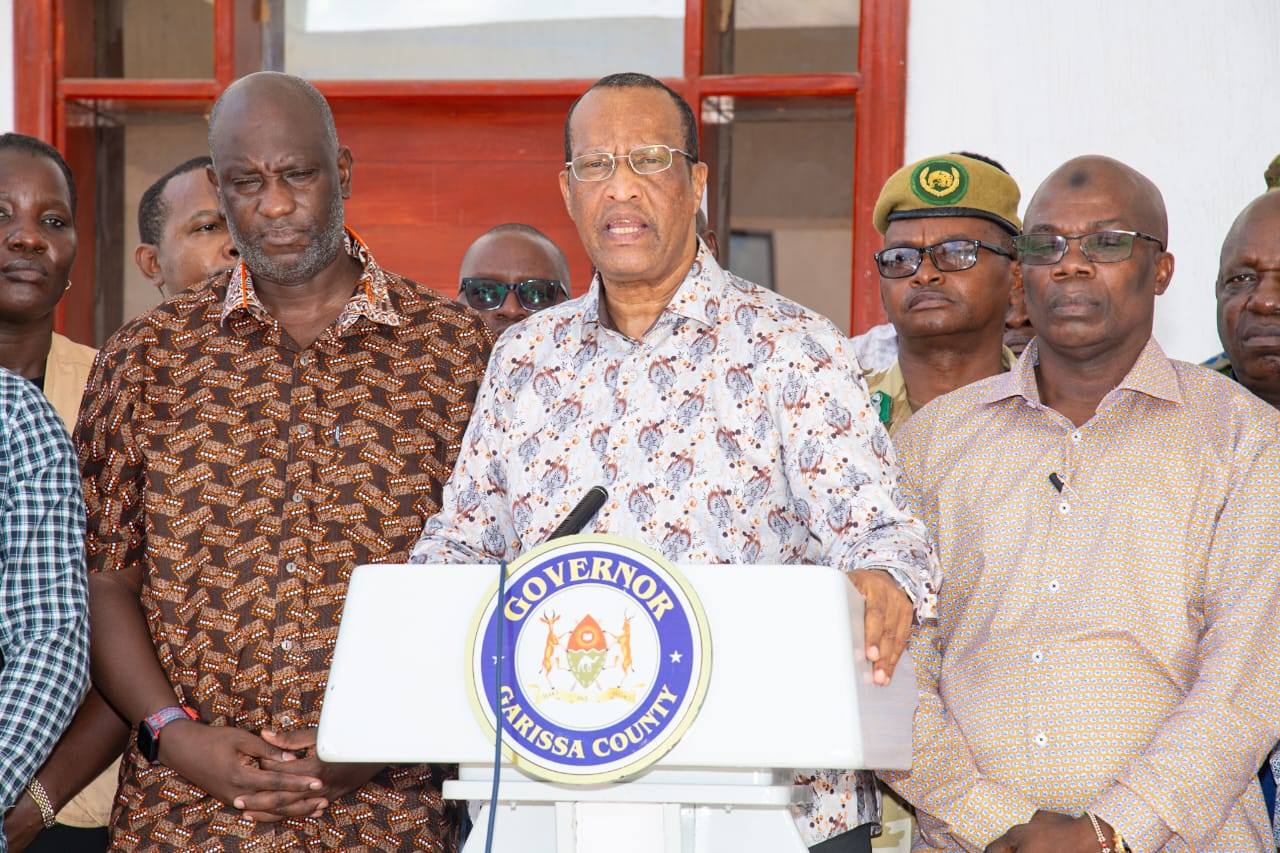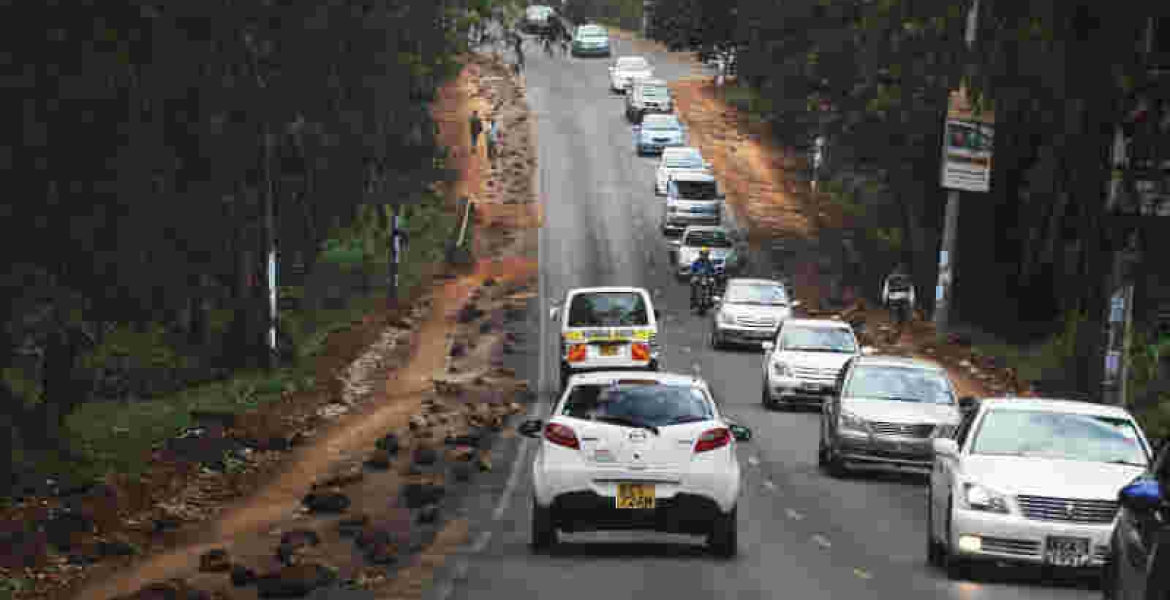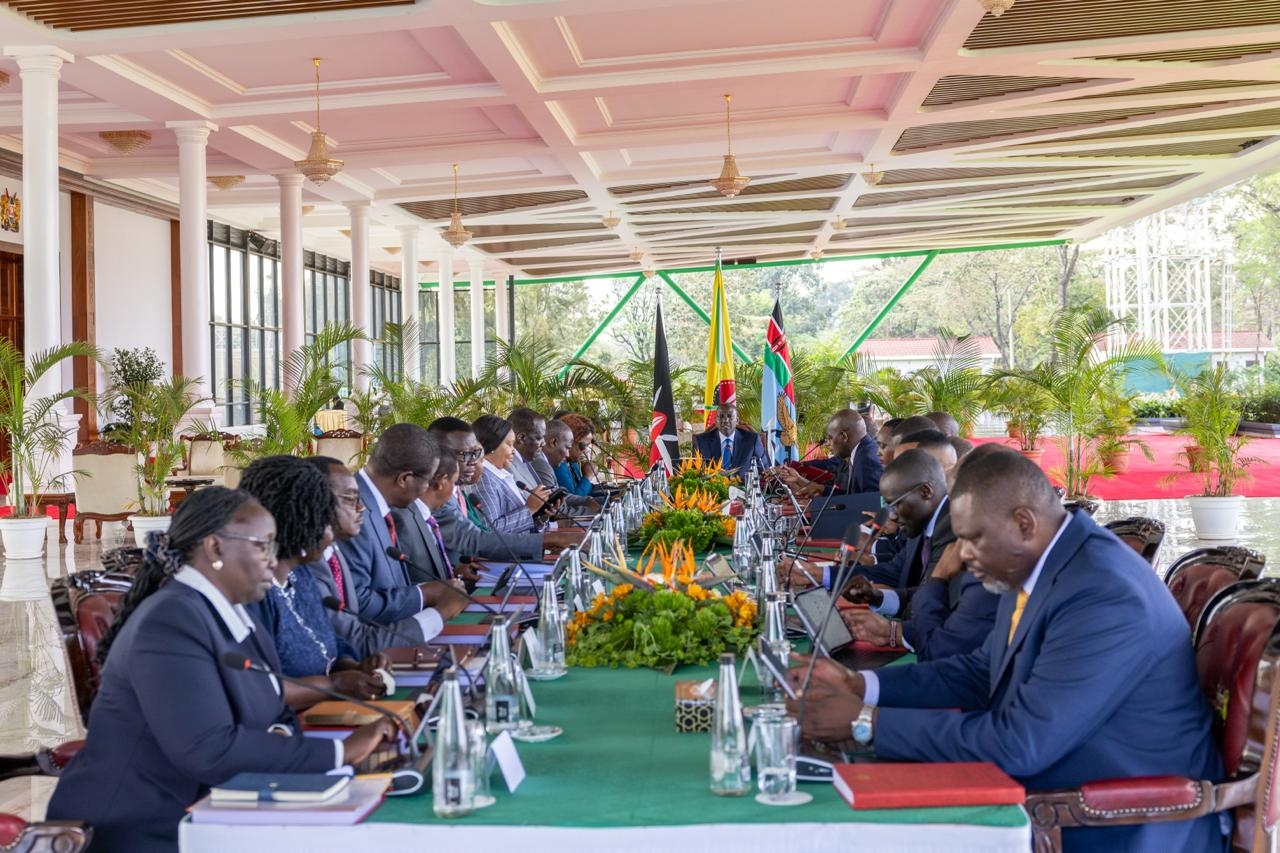
 Garissa Governor Nathif Jama speaking to the press outside
his office after the meeting/STEPHEN ASTARIKO
Garissa Governor Nathif Jama speaking to the press outside
his office after the meeting/STEPHEN ASTARIKO William Ejalu, Head of UNHCR Sub-Office in Dadaab, speaking
to the press/STEPHEN ASTARIKO
William Ejalu, Head of UNHCR Sub-Office in Dadaab, speaking
to the press/STEPHEN ASTARIKO
Partners in Garissa have committed to a joint action against environmental degradation in the Dadaab refugee complex.
The meeting comes in the wake of massive destruction orchestrated by the refugees in the sprawling camps and the vast subcounty.
The meeting addressed the increasing threats of deforestation, overexploitation of natural resources and reported cases of wildlife poaching.
It sought to strengthen refugee–host integration, environmental conservation, implementation of the Shirika Plan and sustainable livelihoods for refugees and local residents.
Jama called for bold action to protect Garissa’s unique wildlife and fragile ecosystems.
“We have discussed at length issues to do with getting an alternative fuel system for the refugee committee in the county because for 34 years now, we have had the refugees cutting our merger forest, particularly our acacia trees and other indigenous trees for firewood,” he said.
Jama said the recommendations include the use of LPG as a good substitute for fuel, saying that with the necessary support from partners, it can work.
“We have made recommendations that need to be acted upon sooner than later. Key among them the need to get an alternative fuel system for the refugees for their cooking requirements,” he said.
“We must protect the giraffe and the acacia tree—the symbols of our identity and resilience. Let us create sustainable fuel and create alternatives for conservation and community wellbeing to go hand in hand.”
William Ejalu, head of UNHCR Suboffice in Dadaab, reaffirmed the agency’s commitment to strengthening its partnership with Garissa county.
“We are proud to stand with the county government in advancing the Shirika Plan and ensuring host and refugee communities benefit from sustainable development,” he said.
Garissa County Commissioner Mohamed Mwabudzo praised the governor for championing peace and environmental responsibility, saying when government institutions and humanitarian partners sit together, real solutions emerge.
Dadaab MCA Mohamed Abdi emphasised the urgent need for a coordinated and sustainable response to protect the fragile ecosystem surrounding Dadaab.
He said of importance is the need for enhanced collaboration between the Kenya Wildlife Service (KWS), local administration and refugee agencies to curb poaching and sensitise communities on the importance of wildlife conservation.
“It is very unfortunate that we have got to this level as far as environmental degradation is concerned. We must move from talking to taking practical steps that balance humanitarian needs with environmental conservation,” Abdi said.
The need to protect wildlife, particularly giraffes, through stronger conservation and awareness campaigns is one of the recommendations agreed upon.
They also agreed to promote alternative fuel and building materials to reduce dependence on indigenous trees.
Two weeks ago, the governor issued a passionate plea for urgent intervention to address the deepening humanitarian and environmental crisis in Dadaab.
Speaking in Addis Ababa during the IGAD high-level regional conference on Improving Livelihoods for Refugees and Host Communities, Jama painted a grim picture of the environmental degradation caused by refugees.
He said for more than 30 years, Dadaab has borne the weight of a global problem that was never designed to last this long.














